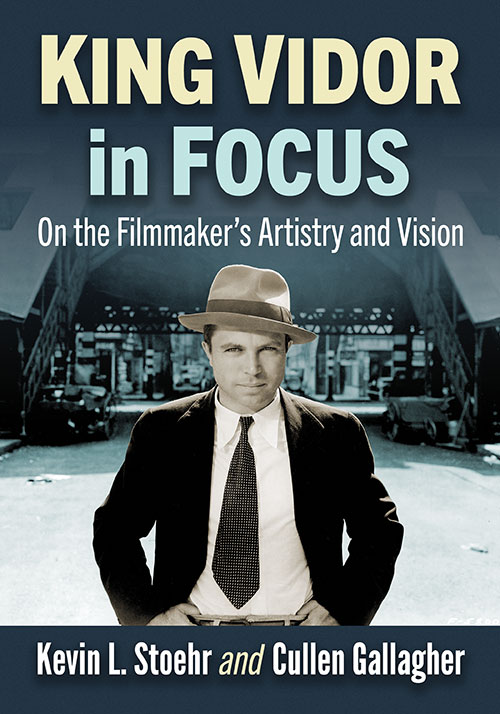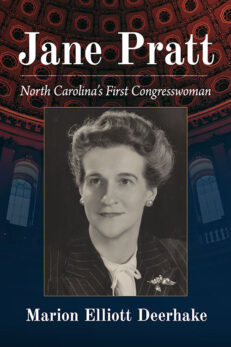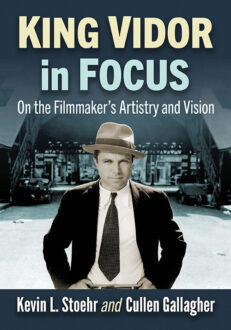King Vidor in Focus
On the Filmmaker’s Artistry and Vision
$49.95
In stock
About the Book
King Vidor (1894–1982) had the longest career of any Hollywood director, and his works include some of the most dramatic, sublime moments in the history of American cinema. Regarded by many film historians as one of the greatest of silent era filmmakers—especially for masterworks The Big Parade, The Crowd, and Show People—Vidor is nonetheless one of the most underrated of Hollywood’s “old masters” in terms of his overall career. His sound era films include Hallelujah, Street Scene, The Champ, The Stranger’s Return, Our Daily Bread, Stella Dallas, The Citadel, Northwest Passage, Duel in the Sun, Beyond the Forest, The Fountainhead, Ruby Gentry and War and Peace. He also helped to establish the Screen Directors Guild and served as its first president.
This book charts the ways in which Vidor’s vast, complex body of work ranges over diverse genres and styles while also expressing his recurring personal interests in spirituality (especially Christian Science), aesthetics, metaphysics, social realism, and the myth of America. The first book since 1988 to give a comprehensive view of Vidor’s career, it discusses his artistic evolution in a way that appeals to the general reader as well as to the film scholar.
About the Author(s)
Bibliographic Details
Kevin L. Stoehr and Cullen Gallagher
Format: softcover (7 x 10)
Pages: 338
Bibliographic Info: 60 photos, filmography, notes, bibliography, index
Copyright Date: 2024
pISBN: 978-1-4766-7009-6
eISBN: 978-1-4766-5249-8
Imprint: McFarland
Table of Contents
Acknowledgments vi
Preface 1
Introduction: A Boy’s Love of Moving Images 5
One. 1913–1917: Missing Reels and First Films 11
Two. 1918–1919: The Turning Point 15
Bud’s Recruit (1918) 15
The Turn in the Road, Better Times, The Other Half, Poor Relations (All 1919) 18
Three. 1920–1921: The Humanist Emerges 24
The Family Honor, The Jack-Knife Man, Mothercraft, The Sky Pilot, and Love Never Dies 24
Four. 1922–1923: Rising and Falling Stars 37
The Woman of Bronze, Three Wise Fools, The Real Adventure, Dusk to Dawn, Conquering the Woman, and Peg O’ My Heart 37
Five. 1924: Personality Crisis 46
Wild Oranges 46
Gulliver’s Travels, Happiness, Wine of Youth, His Hour, The Wife of the Centaur 51
Six. 1925: Proud Flesh and The Big Parade 59
Proud Flesh 59
The Big Parade 61
Seven. 1926: La Bohème and Bardelys the Magnificent 71
La Bohème 71
Bardelys the Magnificent 76
Eight. 1927–1928: The Crowd, The Patsy, and Show People 81
The Crowd (1928) 81
The Patsy (1928) 93
Show People (1928) 97
Nine. 1929: Hallelujah 102
Ten. 1930: Not So Dumb and Billy the Kid 110
Not So Dumb 110
Billy the Kid 113
Eleven. 1931: Street Scene and The Champ 119
Street Scene 119
The Champ 122
Twelve. 1932: Bird of Paradise and Cynara 128
Bird of Paradise 128
Cynara 132
Thirteen. 1933: The Stranger’s Return 136
Fourteen. 1934–1936: Our Daily Bread, So Red the Rose, The Wedding Night, and The Texas Rangers 147
Our Daily Bread (1934) 147
So Red the Rose (1935) 152
The Wedding Night (1935) 157
The Texas Rangers (1936) 160
Fifteen. 1937: Stella Dallas 165
Sixteen. 1938–1939: The Citadel and The Wizard of Oz 173
The Citadel (1938) 173
The Wizard of Oz (1939) 182
Seventeen. 1940: Comrade X and Northwest Passage 185
Comrade X 185
Northwest Passage 190
Eighteen. 1941–1944: H.M. Pulham, Esq. and An American Romance 204
H.M. Pulham, Esq. (1941) 204
An American Romance (1944) 208
Nineteen. 1946: Duel in the Sun 213
Twenty. 1948–1949: On Our Merry Way, The Fountainhead, and Beyond the Forest 227
On Our Merry Way (1948) 227
The Fountainhead (1949) 230
Beyond the Forest (1949) 242
Twenty-One. 1951–1955: Lightning Strikes Twice, Japanese War Bride, Ruby Gentry, and Man Without a Star 248
Lightning Strikes Twice (1951) 248
Japanese War Bride (1952) 250
Ruby Gentry (1952) 253
Man Without a Star (1955) 259
Twenty-Two. 1956–1959: War and Peace and Solomon and Sheba 264
War and Peace (1956) 264
Solomon and Sheba (1959) 272
Twenty-Three. 1964 and 1980: Truth and Illusion and The Metaphor 277
Truth and Illusion (1964) 277
The Metaphor (1980) 285
Author’s Transcript of Truth and Illusion 289
Filmography: King Vidor as Director 295
Chapter Notes 303
Bibliography 317
Index 325
Book Reviews & Awards
• “Film aficionados and scholars will welcome this informative and sympathetic book-length Vidor study”—Library Journal
• “In this new book, the first in-depth look at [Vidor’s] career in more than 30 years, the authors reappraise [his] films, especially his lesser-known films and those dismissed by critics, and, through sharp critical analysis, show how Vidor’s personal beliefs (in particular Christian science) informed the stories of many of his earlier films. …Stoehr and Gallagher balance their subject’s professional life with his personal life, exploring not just the way he made his movies but the reasons why he made them. A first-rate book that should become the standard Vidor reference for years to come.”—Booklist





